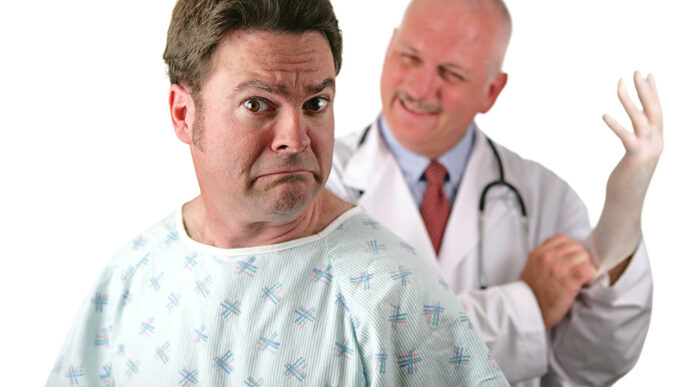When it comes to men’s health, some topics rarely make it to the dinner table — and prostate cancer is one of them. Despite being one of the most common cancers affecting men worldwide, it often flies under the radar until it’s too late. A urologist gives us a closer look at the disease too many men ignore, why those routine check-ups matter, and how early detection can mean the difference between a manageable condition and a life-threatening diagnosis.
WORDS HANNAH MAY-LEE WONG
 FEATURED EXPERT FEATURED EXPERTDR HEMANTH KUMAR RAMASAMY Consultant Urologist and Laparoscopic Surgeon Thomson Hospital Kota Damansara |
The prostate, an organ found exclusively in men, is roughly the size of a walnut.
It is a gland that produces seminal fluid, which protects, nourishes and helps transport sperm.
“The prostate makes 30% of semen. These fluids are essential for the sperm to survive when it is being sent to the female vagina. It’s got lots a minerals and nutrients for the health and wellbeing of the sperm,” Dr Hemanth Kumar Ramasamy explains.
Although the prostate plays a vital role in male reproductive process, prostate cancer rates have been on the rise, and this is certainly an issue men should take note of.
PREVALENCE OF PROSTATE CANCER

Dr Hemanth explains that:
- From a global perspective, prostate cancer rates are the lowest in Southeast Asia compared to the rest of the world.
- In Malaysia, data from the 2007-2011 Malaysian National Cancer Registry Report showed that only 6 in 100,000 people developed prostate cancer, making it the 5th most common cancer among men at the time.
- A recent study conducted by the Malaysian Prostate Cancer Study Group (M-CaP) in 2018 found that prostate cancer has risen to become the 3rd most common cancer among men, occurring in every 12 per 100,000.
- The breakdown of demographics showed that prostate cancer is most common among the Chinese population, followed by Malays.
Urologists deduce that some of the reasons for the rising numbers could be attributed to:
- Men in Malaysia living longer lives.
- Shifting diet towards a more Western palette. The exact reason for this is still unknown, but studies have shown that a Western or meaty diet increases the risk of developing prostate cancer.
“For example, Japan is a country where prostate cancer incidences are very low. But when we look at the Japanese that have migrated to the US especially those who are 2nd generation migrants), we notice that their incidences are higher than the Japanese men living in Japan,” Dr Hemanth shares.
“Therefore, prostate cancer risk could have lots to do with environmental factors,” he adds.
COMMON RISK FACTORS
- Age. The most common risk factor. 80% of prostate cancers are picked up after the age of 60, while prostate cancer in men below the age of 45 is rare.
- Genetics. Prostate cancer is more common in African-Americans and Caucasians, and less common in the Asian population.
- Family history. If a man has a first-degree relative who has prostate cancer (like dad or brother), his risk of developing prostate cancer may be higher, and familial prostate cancer tend to appear earlier.
SIGNS AND SYMPTOMS TO WATCH OUT FOR
“This depends on which stage of prostate cancer a man is in,” Dr Hemanth tells us.
Early Stages
In the early stages, there could be no signs and symptoms. Some cases of prostate cancers are accidentally picked up during routine screening tests.
Some men may get symptoms of the lower urinary tract such as:
- Difficulty in passing urine
- Having a burning sensation during urination
- Going to the toilet more often
- Dribbling after urination
These could be the early indications of prostate cancer, but most of the time, these symptoms are associated with benign prostate hyperplasia (BPH) or enlarged prostate, which is much more common in Malaysia.
Late Stages
For those with late-stage prostate cancer where the cancer has spread to other parts of the body (metastasis), they may get symptoms mainly associated with the bones, as the bones are commonly where the prostate cancer first spreads to.
These bone-related symptoms can include:
- Persistent pain especially in the hips, back, and ribs
- Weakness
- Fractures from minor injuries
- Numbness in the legs if the cancer presses on the spinal cord
“Prostate cancer lesions in the bone are very typical,” Dr Hemanth adds.
- These lesions called sclerotic lesions, and they form at areas where the bone becomes unusually dense and hardened.
- These lesions can be detected through imaging tests like bone scans, X-rays, CT scans, or MRIs, which help doctors spot where the cancer has spread.
HOW OFTEN SHOULD MEN GET SCREENED… AND HOW?
“Usually, screening can be done in men who are above 50,” Dr Hemanth says.
He adds that those with a family history of prostate cancer can opt to do screenings from as young as 45.
Screening is done via a prostate-specific antigen (PSA) test and rectal examination.
- When a screening programme is carried out, a couple of other tests are usually included, such as urine test, ultrasound as well as uroflow to test urine flow for possible obstructions.
- Urologists also would take a detailed clinical history and may ask the patient to complete the International Prostate Symptom Score (IPSS) questionnaire.
If the Tests Are Positive
- A trans-rectal ultrasound biopsy is usually done if the possibility of prostate cancer is picked up by a PSA test or rectal examination.
- It involves using a specialized probe which is put through the rectum. Small tissue sample is then taken from 12 different areas of the prostate.
- The tissue sample is sent to a pathologist for determining the aggressiveness or grade of the cancer cells.
- Several other scans, such as bone scans, MRI or CT scans may be used to determine if the cancer has spread beyond the prostate.
| Click here for an article in which Professor Dato’ Setia Dr Tan Hui Meng addresses the more controversial aspects of prostate screening. |
TREATMENT OPTIONS
A patient’s treatment plan would depend on several different factors including the patient’s age, the aggressiveness of his cancer and whether the cancer has spread.
Surveillance for Slow-Growing Cancer Cases
- “For some men, the cancer grows so slowly that it’s unlikely to cause any serious problems for years, or even decades,” Dr Hemanth shares.
- In such cases, doctors may suggest regular check-ups and tests — a plan called active surveillance — instead of rushing into treatment right away.
- This is because starting treatment too early may result in complications of treatment such as erectile dysfunction, incontinence, issues with passing urine, blood in the urine, etc.
- Hence, doctors may try to delay treatment as much as possible. During active surveillance, the patient sees his doctors every 3 months for follow-up rectal examinations and blood tests.
- Every 1 year to 18 months, a urologist may perform another biopsy to monitor the cancer’s progress. If signs show that the cancer is progressing, the patient may then opt for treatment.
Radiotherapy and Surgery
- Dr Hemanth explains that if the cancer is more serious and likely to spread, treatment options like radiotherapy or prostate surgery are usually offered to stop it in its tracks.
- Radiotherapy can be divided into external beam radiation and brachytherapy.
- With external beam radiation, radiation comes from outside the body and is directed to the prostate cancer.
- With brachytherapy, radioactive seeds are placed into the prostate, and these seeds deliver low doses of radiation over time to kill cancer cells.
- The surgical option is called a radical prostatectomy. It can be done as open surgery or via robotic prostatic surgery.
Hormonal Therapy for Cancer That Has Spread
- When prostate cancer spreads, doctors often use hormonal therapy to slow it down by cutting off the hormones that fuel its growth.
- Prostate cancer is fueled by testosterone, so hormonal therapy is used to cut down testosterone levels in the body.
- In doing so, cancer cells may die off.
Sometimes, hormonal therapy may be given to shrink the tumour first before the patient undergoes for radical surgery.
If hormonal therapies do not work, one can choose to go for chemotherapy.
| This article is part of our series on cancers that affect men and how these cancers are managed or treated. |














